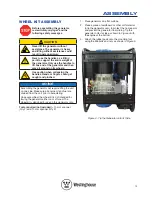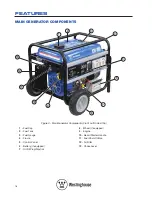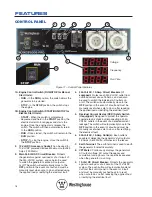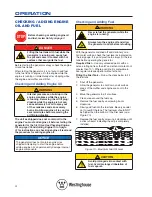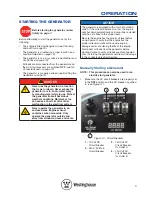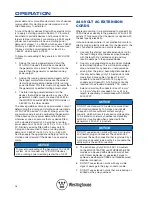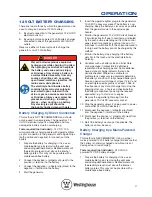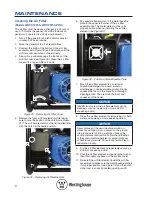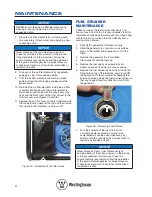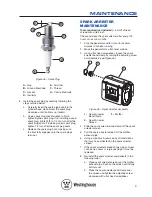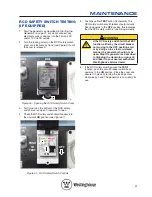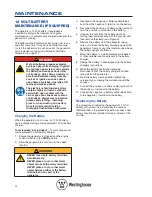
25
OPERATION
NOTICE
DO NOT connect any 240-Volt AC device that is
fitted with a three-pin 20 A plug. This can overload
the generator.
See 240-Volt AC Extension Cords on page 26 for
detailed instructions concerning their selection and
use.
12-Volt DC Loads
12-Volt DC devices can be connected either directly or
via an electrical extension cord not exceeding 3.5 m
in length into the 12-Volt DC outlet on the generator’s
control panel. Pull out the weather resistant stopper on
the outlet for access to connect the electrical device or
cord, and re-insert it after use.
NOTICE
The generator’s 12-Volt DC electrical output is
unregulated. DO NOT connect any 12-Volt DC
device that may be damaged by voltage fluctuations.
12-Volt DC devices or extension cords must be fitted
with a cigarette lighter plug for connection to the
generator as shown in Figure 24.
!
WARNING
Never insert an automotive cigarette
lighter device into the 12-Volt DC
outlet. The heated lighter may ignite
the fuel causing an explosion or fire.
Power Output and Demand
There are two limits to the amount of electric power
that the generator can usefully provide: (a) its total
240-Volt AC or 12-Volt DC electric power generating
capacity or power output and (b) the electric current or
power output capacity of each individual 240-Volt AC
or 12-Volt DC outlet.
The generator’s total power output measured in
Watts is listed in the Specifications (see page 47).
Two 240-Volt AC power outputs are specified for each
generator, namely the running power and the starting
power. A single 12-Volt DC power output is also
specified.
NOTICE
DO NOT overload the generator’s 240-Volt AC or
12-Volt DC circuits beyond their rated capacities.
This can result in damage to the generator or to the
connected devices.
The generator should not be run completely unloaded
for extended periods otherwise the engine may be
damaged. It is recommended that the generator
should always be operated with at least one-third of its
rated 240-Volt AC power output.
240-Volt AC devices have two different electric power
demands that must be taken into consideration,
namely the running power and the starting power. Both
are measured in Watts (typically abbreviated as “W”).
The steady state continuous load is the running power
demand and this is often marked on the device near its
model number or serial number. Sometimes the device
might only be marked with its voltage (i.e. 240 Volt or
240 V) and current draw (e.g. 6 Ampere or 6 Amp or 6
A), in which case the running power demand in Watts
can be obtained by multiplying the voltage times the
current, e.g. 240 V × 6 A = 1,440 W.
Simple resistive 240-Volt AC devices such as
incandescent bulbs, toasters, heaters, etc. have no
extra power demand when starting, and so their
starting power demands are the same as their running
power demands.
More complex 240-Volt AC devices containing
inductive or capacitive elements such as electric
motors have a momentary extra power demand when
starting, which can be up to seven times the running
Figure 24 – 12-Volt DC Cigarette Lighter Plug
A - 15 Ampere
b - 10 Ampere
Figure 23 – 240-Volt AC Three-Pin Plugs
Summary of Contents for WHXC3750
Page 4: ...4...
Page 55: ...55 NOTES...



